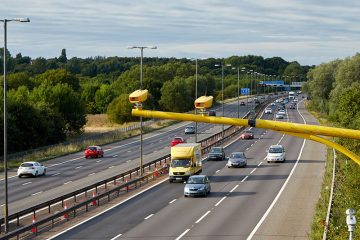Current M25 Traffic Conditions and Future Improvements

Introduction
The M25 motorway is one of the busiest roads in the United Kingdom, encircling Greater London and serving as a crucial transport link for commuters and freight alike. With its significance for daily travel and commerce, understanding the traffic conditions and patterns on the M25 is essential for both local residents and visitors. Recent data and events highlight ongoing challenges, as well as measures aimed at alleviating congestion and improving flow.
Current Traffic Issues
As of October 2023, the M25 continues to experience significant traffic congestion, particularly during peak hours. Reports indicate average speeds falling below 30 mph in various segments, especially around critical junctions such as J15 with the M4 and J16 near the M40. Regular incidents, roadworks, and adverse weather conditions have exacerbated delays, leading to frustration among motorists.
Recent Developments
In response to ongoing congestion, UK transport authorities have initiated several projects aimed at enhancing traffic management. One prominent initiative is the implementation of smart motorway technology, which includes variable speed limits and lane management to optimise traffic flow. Furthermore, the Highways England has announced a series of planned upgrades to junctions and additional lane capacities, particularly around busy areas, which are expected to commence in early 2024.
Additionally, the introduction of real-time traffic monitoring systems has allowed for quicker dissemination of information regarding accidents or heavy traffic, enabling drivers to make informed choices about their routes. This technology has been pivotal in reducing congestion-related delays.
Long-Term Solutions
Transport experts suggest that long-term investments are necessary to ease traffic on the M25. These could include enhancing public transportation options, such as expanding bus and rail services that integrate with the motorway, thereby encouraging carpooling and reducing single-occupancy vehicles on the road.
Moreover, the promotion of telecommuting and flexible working hours has been suggested by some urban planners as a viable strategy to reduce overall traffic volumes during peak times. As remote work becomes a more normalised practice, this shift could lead to lasting changes in travel behaviour.
Conclusion
In conclusion, while the M25 remains a vital artery for transportation in the UK, the challenges of traffic congestion persist. Ongoing initiatives and projects dedicated to improving road conditions, coupled with strategic long-term planning, may offer some relief to today’s frustrated commuters. Keeping abreast of traffic updates and anticipated changes will be vital for anyone relying on this critical roadway in the months and years ahead.









